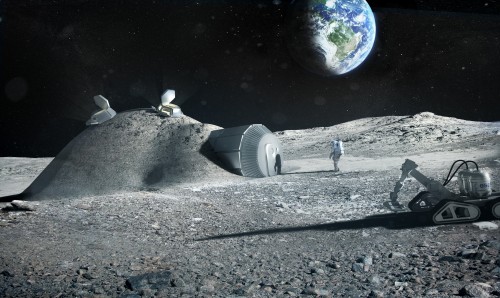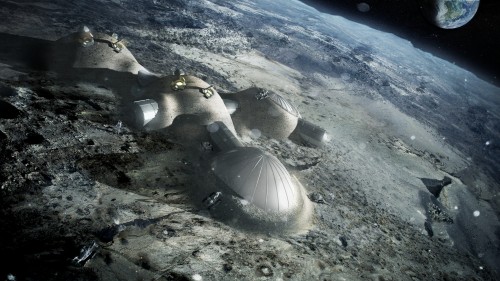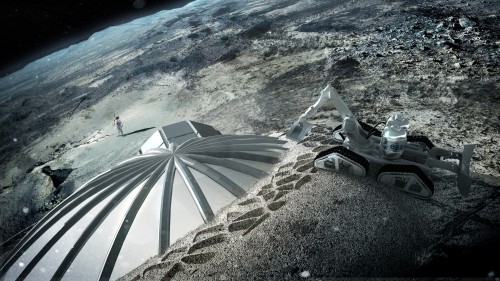
Foster + Partners, a London-based architecture firm, has buildings on six continents. The company has accrued numerous awards in innovation and sustainability, working with local resources and dramatic climate conditions to create some of the most sensational modern buildings in the world. Its latest project, though, will go beyond the scope of this planet.
Teaming up with the European Space Agency, Foster + Partners is developing construction plans for what they call a “lunar habitat” — in other words, a colony on the moon.

As with any of the company’s projects on Earth, efficiency and sustainability are key interests. But, as it turns out, construction in outer space poses challenges beyond those of our planet’s least hospitable environments. Falling micrometeoroids will endanger construction and the atmospheric vacuum will complicate the functions of machinery. On the moon, night lasts two weeks. Temperatures can drop as low as -280 degrees Fahrenheit, and then spike to 200 degrees Fahrenheit in the two weeks of daytime that follow. There is no wind, but there is also no magnetic field for protection from space radiation.
The envisioned dome will be able not only to withstand these conditions, but also to offer protection for four astronauts. The walls will be made up of hollow compartmental cells, resembling a honeycomb or a sponge, in order to minimize necessary materials while maximizing strength. The south pole of the moon has been marked as the location for construction, where the sun shines continually and temperature changes are somewhat less drastic.

As for the transportation of building materials, there will not be much to bring. Instead, 3-D printers will be used to remotely control the construction of the moon dome from Earth, and most of the building materials are already there. The D-Shape, a 3-D printer from the British-based company Monolite, has been tested for its ability to transform lunar soil, or regolith, into a 1.5-ton concrete block. Once installed on the moon’s surface, the D-Shape will combine regolith with magnesium oxide to form a cohesive material, which will then cover an inflatable dome. With the technology perfected, the entire structure will take only a week to construct.
Although a giant accomplishment for Foster + Partners and for mankind, creating a base on the moon is likely to be only the first of many catalytic strides when it comes to science. The moon provides the ideal location for an observatory as there is nearly no atmospheric diffraction, and weather patterns will not interfere with astronomical observations and calculations. Constant sunlight during the lunar summer on the south pole could be an energy source for crops or even an alternative energy source for our planet if harvested by solar panels. When it comes to building a habitat on the moon, it is not just the excitement of going there that holds appeal, but also the excitement of of what we may be able to bring back.
